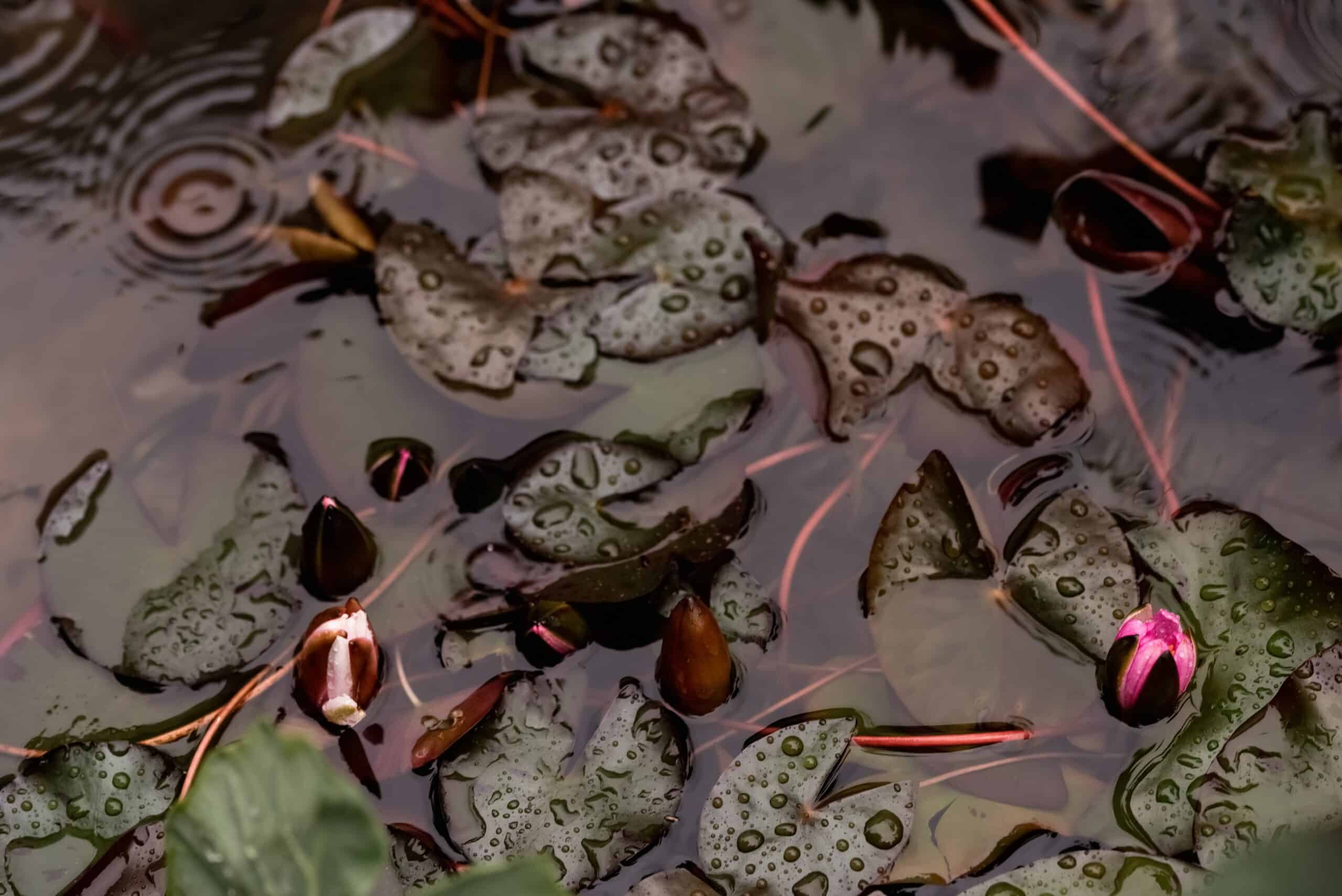Gardening is a rewarding hobby that can bring joy to the gardener, as well as those around them. With gardens now being seen as outdoor sanctuaries and places of connection, it’s becoming increasingly important to choose the right plants for your garden. One of the most beautiful flowers to add are lilies. Bright and come in a variety of colors, lilies can help transform any garden into something special. But with so many types of lilies to choose from, it can be hard to know where to start. To help you make the best decisions for your garden, we’ve put together a selection of 9 types of garden lilies that you should consider growing this year.
The beauty of adding lilies to your garden is that they’re easy to grow and maintain. From Asiatic hybrids and Trumpet Lilies, through to Turk’s Cap and Martagon hybrids, there’s sure to be one that fits perfectly into your garden plan. Not only will you be able to enjoy their beauty in bloom, but you can also harvest their seeds for future planting seasons or share them with friends and family – making them an excellent choice for both novice and experienced gardeners alike.
So if you’re looking for ways to spruce up your outdoor space this season then why not start by adding some stunning lilies? In this article we take a look at 9 types of garden lilies that are sure to add some color and pizzazz to any outdoor setting. Read on and find out which one will best suit your gardening style!
What Is A Lily?
Ah, the lily: a flower so elegant, it could make any garden look like a work of art. But what is this majestic bloom? Well, let me tell you: A lily is a flowering plant usually found in temperate climates, with trumpet-shaped flowers that come in various colors and sizes. They can be quite versatile when planted in the garden, as they can range from tall and stately to smaller and more compact varieties. Whether you’re looking for something to add a pop of color or looking for a low-maintenance option, there are plenty of types of garden lilies to choose from!
Among these types are Asiatic lilies. These brightly colored beauties come in shades of yellow, orange, pink, white and many other vibrant hues. They tend to be early bloomers and have large blooms that can reach up to six inches in diameter. Asiatic lilies also have an incredibly sweet fragrance which makes them great for adding an extra touch of beauty to your outdoor space!
Asiatic Lilies
Have you ever wondered which lilies you should plant in your garden? Asiatic lilies are some of the most popular lilies for gardens. These colorful, fragrant flowers come in a variety of shapes and sizes, making them ideal for any type of garden.
Asiatic lilies produce large blooms that can range from four to six inches in diameter with a wide range of color variations. They are easy to care for, as they require little maintenance and can survive in both sun and partial shade. Additionally, their long stems make them great cut flowers, allowing you to enjoy their beauty indoors as well.
These lilies also have a pleasant fragrance that will fill your garden with a sweet aroma. You can even plant multiple varieties of Asiatic lilies together to create an eye-catching display in your garden. With so many benefits, it’s no wonder why Asiatic lilies are some of the most popular types of lilies for gardens!
Oriental Lilies
Oriental lilies are a beautiful addition to any garden. The fragrant, trumpet-shaped flowers of these showy plants come in a variety of colors and sizes, from deep purples to bright whites and oranges. Not only are they attractive, but oriental lilies bloom from midsummer through late summer and can last for weeks at a time.
These easy-to-care-for perennials do well in full sun and moist soil, but also tolerate partial shade. They grow tall – up to 4 feet – so be sure to place them in the back of the garden bed or in the center of an island bed for maximum impact. Planting them near a patio or garden bench is also an excellent way to enjoy their fragrance up close.
Oriental lilies are not only gorgeous and fragrant, they’re also incredibly resilient plants that require very little maintenance once established. These hardy flowers will reward your efforts year after year with more blooms as they mature, making them an ideal choice for gardeners looking for long-term beauty with minimal effort. As you move onto the next section about trumpet lilies, keep these considerations in mind while deciding which type of lily is right for your garden design.
Trumpet Lilies
Trumpet lilies, a symbol of boldness and celebration, are an excellent addition to any garden. Their striking trumpet-like flowers add a dramatic flair to the landscape while also providing a splash of color with their blooms. With their tall stems and large petals, these lilies are sure to make a statement in any garden.
These lilies come in a wide range of colors: white, orange, yellow, pink, and even deep purple. They can be grown from bulbs or seed for vibrant displays year after year. Planting trumpet lilies at different depths will achieve different heights, giving your garden variety and visual interest. As the name suggests, trumpet lilies can have quite the presence when planted in groups.
These showy plants are easy to maintain as long as they get plenty of sun and water during growing season and drained soil in winter. Deadheading spent blossoms helps encourage more blooms throughout the season while cutting away dead foliage helps keep them looking tidy.
Trumpet lilies bring beauty and energy to gardens of all sizes with their impressive presence – radiate happiness with their cheerful blooms that will surely light up your garden!
Species Lilies
Species lilies are the most diverse variety of lilies, with over 100 species available to choose from. Many species come from Europe, North Africa and Asia, meaning they can thrive in a variety of climates and soils. Species lilies have large range of flower colors, including white, yellow, pink and deep red. Depending on the varieties you choose to grow, their height can range from 6 inches up to 5 feet tall.
You’ll also find that species lilies bloom at different times throughout the growing season. For example, some will flower early in spring while others peak in late summer or early fall. This means that if you plan your garden correctly, you can have a continuous display of flowering lilies from spring until autumn! Plus, many species lilies are fragrant, bringing even more enjoyment to your garden space.
When selecting which species lily is best for your garden space, it’s important to consider what type of soil and climate your area has so you can choose a plant that will thrive there for many years to come. Taking care when planting and watering your species lily will ensure it grows strong and healthy for many seasons. With careful selection and care, you’ll be able to enjoy beautiful blooms every year!
Martagon Lilies
Martagon lilies are a beautiful addition to any garden. With their unique color variations and delicate blooms, they offer a stunning display of beauty that is sure to turn heads. Here’s what you need to know about them:
- Martagon lilies are perennial flowers that bloom in shades of pink, purple and white.
- They grow best in partially shaded areas and require moist but well-drained soil.
- The flowers can be grown from bulbs or seeds, though bulbs will produce more vibrant colors and larger blooms sooner than seeds.
These lilies can be a bit tricky to care for, but the effort is worth it! When planting martagon lilies, make sure to plant the bulbs at least six inches deep and at least three inches apart from each other; this will give the plants enough room to root properly and get ample sunlight while keeping them cool during hot summer days. Beyond this basic care, all you need to do is water them regularly and give them some fertilizer once in a while to ensure they stay healthy and strong.
With their unique look and easy maintenance requirements, martagon lilies are an excellent choice for gardeners looking for something special – so why not add some of these beauties to your own garden? Next up: la hybrid lilies – let’s take a closer look at these unique blooms!
La Hybrid Lilies
The la hybrid lily is a symbol of strength and beauty, embodying the idea of transformation and metamorphosis. With its delicate petals, these garden lilies are an elegant addition to any outdoor space. Featuring colours that range from white to deep pink and purple, they create a stunning display of colour. They also have strong stems that can withstand harsh winds and cold temperatures.
These vibrant flowers are easy to grow in most soils, so they’re a great choice for beginner gardeners. Plus, their sweet scent will fill your garden with delightful aromas. They look best when planted in groups or along pathways since they can reach up to three feet tall. La hybrid lilies are drought-tolerant and require little maintenance, making them an ideal choice for busy gardeners.
The la hybrid lily is a perfect way to add beauty and grace to your backyard oasis. Whether you’re looking for an eye-catching centrepiece or just want some extra colour in your garden, these lovely blooms won’t disappoint! With their unique colours and fragrant aroma, la hybrid lilies will add a touch of elegance wherever they’re planted.
As we transition into discussing ‘longiflorum lilies’, it’s worth recognizing that these resilient flowers make the perfect choice for any gardener who wants low-maintenance plants with beautiful blooms.
Longiflorum Lilies
A timeless classic, longiflorum lilies are the perfect choice for gardeners looking to add a special touch of elegance and beauty to their landscape. These regal blooms come in a variety of colors and have an exquisite fragrance that will make your garden look and smell amazing. Growing longiflorum lilies is easy, as they tolerate most soil types and can thrive in both full sun and partial shade.
For those who want to add a splash of vibrant color to their garden, longiflorum lilies come in white, pink, red, orange, yellow and lavender varieties. In addition, many of these lilies also produce multiple flowers per stem for an even more stunning display. This type of lily is ideal for creating beautiful beds or borders along walkways or near other plants.
When caring for longiflorum lilies, remember to water them regularly during the growing season so that the soil is kept evenly moist. Also keep in mind that these plants bloom best when planted in well-drained areas where they receive plenty of sunshine. TIP: To prevent diseases from affecting your longiflorum lilies, be sure to remove any dead leaves or stems at the end of the season before winter arrives.
Interdivisional Hybrids
Interdivisional hybrids, the ninth type of lily to consider growing in your garden, are a combination of two different lilies from different divisions. These hybrids have characteristics from both parent plants, and are bred for their vibrant colors, hardiness, and large flowers. They are fast-growing and easy to care for, making them a great choice for any gardener.
These interdivisional hybrids come in many shapes, sizes, and colors that make them stand out in any garden. From the soft pastel of the Regale Lily to the bright orange of the Orange Pixie Hybrid, these lilies can bring a cheerful atmosphere to even the dullest of spaces. You can also find some with unique flower shapes such as Star Gazer Lilies or Stargazer Pink Lilies which will help create an interesting display in your garden.
When it comes to choosing and planting lilies in your garden, keep in mind that interdivisional hybrids need plenty of sunlight and well-draining soil for optimal growth. Planting them during cooler months is best since they are susceptible to heat stress during hot summers. With proper care and maintenance, interdivisional hybrid lilies can add beauty and interest to your garden for years to come!
Choosing And Planting Lilies
When it comes to choosing and planting lilies in the garden, you need to be strategic. It’s not a one-size-fits-all situation; each variety of lily requires different care and cultivation. To ensure your garden is blooming with beautiful lilies come summertime, let’s dive into what you need to know about planting these gorgeous flowers.
First and foremost, determine which types of lilies are best for your region. Different species require different soil type and climate conditions, so doing a bit of research ahead of time can save you from a lot of heartache later on. Once you’ve identified the varieties that will thrive in your area, plan out where they will go in the garden. Take into account sun exposure, soil composition, and other plants that may be sharing the same plot – all important factors when it comes to creating an ideal home for your choice of lilies.
Finally, pay attention to when you plant them. This is crucial for keeping up with their bloom cycles. Planting too late or too early can lead to weaker stems or lacklustre colour; both undesirable outcomes! With that in mind, keep track of how long each variety takes from seedling to full bloom so you can get them in the ground at just the right time for maximum results.
With these tips in hand, you’ll have no problem introducing stunning lilies into your garden this season! Just remember: choose wisely, plan carefully and keep close tabs on the timeline – success awaits!
Caring For Lilies
Caring for lilies is like a delicate dance of balance. From providing enough light and moisture to knowing when to prune them, managing lilies in your garden requires a special touch. Here’s how you can ensure your lilies thrive:
Watering Wisely: Lilies need consistent moisture but not so much that the soil becomes soggy. Check the soil 2-3 inches below the surface with your finger before watering.
Mulching: A 2-4 inch layer of mulch can help preserve moisture and keep weeds away from your lilies. Make sure to use organic mulches such as bark or wood chips to discourage disease and pests.
Pruning & Deadheading: To keep your plants tidy, cut off dead flower heads and brown foliage when necessary. Depending on the type of lily, prune back leaves after blooming season to encourage new growth.
With proper care, you can enjoy beautiful blooms in your garden every year! Once you have established healthy lilies, it’s time to turn attention to propagation so that more friends can enjoy these flowers too.
Propagating Lilies
Necessity is the mother of invention.” Propagating lilies is a great way to ensure that your garden blooms with these gorgeous flowers for years to come. While propagating any type of flower can be tricky, with the right preparation and knowledge, it’s possible to successfully propagate lilies in your very own garden.
The most common method for propagating lilies is by bulb division. Start by digging up bulbs when they’re dormant – typically in late fall or early spring – and dividing them carefully into multiple pieces with a sharp knife or spade. Each piece should have at least one scale, which will eventually grow into a new plant. Plant each piece separately in well-drained soil, at an appropriate depth for the particular variety of lily you are growing.
Water regularly until the plants become established and monitor them closely during their first summer season, as this is when they’ll be most vulnerable to pests and disease. If you find any problems, take prompt action to treat them before they become too serious. With proper care and attention, you’ll soon be able to enjoy beautiful lilies blooming in your garden for years to come!
Troubleshooting Lily Problems
Troubleshooting lily problems is a key part of gardening. After all, no gardener wants to see their beloved lilies succumb to disease and pests! So, how can we make sure our garden lilies stay healthy and beautiful?
Firstly, it’s important to identify what type of problem you’re dealing with. Is it a pest infestation or an environmental issue? Once you’ve identified the source of the problem, you can begin taking steps to address it. Different types of lilies may require different solutions, so be sure to research the particular variety of lily you’re growing for specific advice on how to tackle any issues that arise.
Common troubleshooting methods include using insecticides or fungicides if pests are present and making sure your lilies have adequate water and sunlight if environmental conditions are the issue. Whatever the cause of your lily problems, there are plenty of ways to combat them and keep your garden looking its best. Taking small steps towards troubleshooting early on can save a lot of time and effort down the line!
Benefits Of Growing Lilies
Like a beautiful garden of flowers, the benefits of growing lilies are diverse and plentiful. As an ode to their beauty, growing lilies is like painting a vivid picture of a garden paradise. Let’s explore why these lovely flowers are so beneficial and how they can help spruce up your outdoor space.
To start, lilies are incredibly low-maintenance. Once they’re planted, all you have to do is water them and enjoy! Furthermore, they come in various shapes, sizes and colors. From soft pastels to bold hues, there’s something for everyone. So you’ll be sure to find the perfect match for your garden’s aesthetic.
These blooms also bring an array of benefits for wildlife. Their sweet nectar attracts hummingbirds and butterflies while their pollen serves as food for bees. And with their natural air purifying abilities and oxygen production, lilies can create an inviting home for nature in your backyard.
Whether you’re looking to add some color or attract more wildlife into your outdoor space, lilies are a great choice! Now that we understand the benefits of growing them let’s move on to exploring which varieties work best in your garden.
Best Varieties Of Lilies For Your Garden
If you’re looking to add a stunning floral display to your garden, lilies are the perfect choice. Not only do they provide a riot of color and texture, but there are so many different varieties for you to choose from. In this article, we’ll cover some of the best lily varieties for your garden.
When it comes to selecting the right type of lily for your garden, it’s important to consider their size, color and bloom time. Taller varieties provide a dramatic backdrop in flower beds or along pathways while shorter plants can be used as colorful ground covers near walkways or fences. Consider what colors you would like in your garden and look for varieties that will fit this theme – there are lilies available in shades of white, yellow, orange, pink and red! Keep in mind when each variety blooms so that you can enjoy a continuous display of stunning flowers throughout the growing season.
Whichever type of lily you choose for your garden, you’ll be rewarded with an eye-catching display of blooms and foliage. Whether you opt for an old-fashioned favorite or a more unusual cultivar; these beautiful flowers will surely bring life and vibrancy to any outdoor space!
Frequently Asked Questions
How Long Do Lilies Typically Bloom?
Have you ever wondered what it takes to keep a garden blooming with lilies? Knowing the different types of lilies to grow, as well as how long they typically bloom, can help ensure that your garden is always in full effect. So, how long do lilies typically bloom?
Lilies generally last anywhere from two to four weeks before they need to be replaced. This depends largely on the type of lily and the climate in which it is grown. Some varieties may last longer while others may die off quicker due to weather conditions and other factors such as pests or disease. If planted in ideal conditions, the blooms should last for several weeks without much effort.
When caring for lilies, try to keep them away from direct sunlight and water them regularly. Pruning them back can also help extend their life span by preventing overcrowding and encouraging new growth. Additionally, if you want your lilies to come back each season, be sure to fertilize them at least once a year. Taking these steps will ensure that your garden lilies are always in full bloom!
How Often Should I Water My Lilies?
Properly watering your lilies is essential to keeping them looking and feeling their best. A good rule of thumb is to water your lilies once a week, or whenever the soil feels dry to the touch. It’s important to make sure you’re not overwatering, as it can lead to root rot and other diseases that can damage or kill the plant.
To ensure you’re giving your lilies the right amount of water, you should use a moisture meter. This tool will help you quickly and accurately measure the moisture in the soil so you know when it’s time to give your lilies a drink. Make sure not to water your lilies when they are in direct sunlight as this can cause them stress and make them more susceptible to disease and pests.
When it comes to watering your lilies, consistency is key! Watering regularly will help keep them healthy, while also making sure they look their best throughout their blooming period. Keeping an eye on rainfall amounts can also be helpful if Mother Nature decides to lend a hand with watering duties!
How Much Sunlight Do Lilies Need?
Growing lilies in your garden can be a great way to add some vibrant, eye-catching color to your outdoor space. But just how much sunlight do these gorgeous blooms need?
Let’s take a look at the three key components of lily care when it comes to sunlight: duration, intensity, and location.
When it comes to duration, lilies prefer around 6-8 hours of direct sunlight each day. This is especially true for Easter and Asiatic lilies who are much more tolerant of heat than their Oriental cousins. To ensure your lilies get enough direct sunlight, try planting them in a south or west facing area of your garden that gets plenty of sunshine during the day.
As for intensity, most types of lilies prefer full sun but can also tolerate part shade if necessary. If you live in an area with particularly hot summers, consider choosing varieties that can handle partial shade such as stargazer or Casablanca lilies. Doing so will help protect the plants from overexposure and prevent them from wilting too quickly.
Finally, keep in mind that the location you choose for your lily plants should provide adequate air circulation and drainage. Placing them too close together can lead to mold growth which can cause damage and ultimately kill the plant. Here are some key tips on how to set up your ideal spot for growing lilies:
- Make sure the soil is well-draining with plenty of organic matter like compost or mulch;
- Choose a spot that gets plenty of sunlight throughout the day;
- Plant in an area with good air circulation and away from other competing plants;
- Water regularly but never overwater as this can lead to root rot. Overall, understanding how much sun exposure is best for your particular type of lily will help ensure they receive the optimum amount for healthy growth and blooming. With proper care and maintenance, you’ll be able to enjoy these beautiful flowers all year long!
What Type Of Soil Is Best For Growing Lilies?
Growing lilies in your garden requires the perfect combination of soil, light, and care. One of the most important elements to consider is the type of soil that’s best for growing lilies.
When it comes to soil for lilies, there are certain characteristics you should look for. First and foremost, good drainage is critical. Lilies don’t like soggy soil, so make sure the soil you use drains well. Additionally, it should be a slightly acidic soil with a pH level between 6 and 7 – this can easily be tested with a simple soil test kit. Here are five key attributes to look out for in the ideal soil for lilies:
- Good drainage
- Slightly acidic pH levels
- Ample organic matter
- Light texture
- Plenty of oxygen
You’ll also want to make sure your lily bed has plenty of nutrients like nitrogen, phosphorus, and potassium so they can flourish over time. Consider adding compost or other natural forms of fertilizer to boost nutrient levels. In addition to providing the right kind of soil, you’ll want to make sure your lily plants get proper sunlight too – typically 4-6 hours per day is ideal.
Taking proper care of your lily garden involves creating an environment that meets all its needs – from water and sunlight to nutrition and ideal soil conditions. With this combination in place, you’re sure to have beautiful blooms!
How Should I Protect My Lilies From Pests And Disease?
Protecting your lilies from pests and disease is key for keeping them healthy and vibrant in your garden. To do so, there are a few simple steps you can take. Firstly, inspect the area around your plants regularly to look for signs of trouble, such as wilting leaves or discolorations on the petals. Secondly, give them plenty of space to allow good air circulation which helps prevent fungal diseases and other issues. Lastly, remove any affected foliage to help limit spread of any existing problems and keep your garden looking its best.
In addition to inspecting the area around your lilies, it’s important to also use natural pest control methods whenever possible. For example, introducing beneficial insects like ladybugs or lacewings can help keep aphids away – they love to munch on these pesky critters! You can also companion plant with herbs such as mint or chamomile which can repel certain types of pests while attracting others that will help keep the balance in check.
Finally, if you are dealing with a particularly persistent problem it might be necessary to resort to chemical pesticides, but this should always be done with caution and an understanding of how it might impact other species in your garden. Be sure to read product labels carefully before applying anything and only use approved products for food crops – never spray any chemicals directly onto flowers!
TIP: Regularly check for signs of pests and disease – early detection is key for effective treatment!
Conclusion
In the end, it’s clear that growing lilies in your garden is a rewarding experience that requires proper care and attention. Lilies are beautiful and diverse blooms that will not only bring a splash of color to any garden, but also offer a peaceful atmosphere full of life. By understanding the needs of each type of lily, you can ensure they have the right environment to thrive.
To illustrate this idea further, let’s imagine lilies as people. Each one has their own unique qualities and preferences that must be taken into consideration if we want them to reach their fullest potential. We offer them warmth from the sun, nourishment from the soil, protection from pests and disease, and plenty of water—just like we would for our friends or family members. With this kind of care and dedication, we create an environment where everyone can thrive together in harmony.
At its heart, gardening is about nurturing living things and creating something beautiful with love and patience. Growing lilies in your garden is no exception—it’s an opportunity to show appreciation for these gorgeous blooms while learning more about them along the way. With time and effort you can create an oasis full of vibrant colors and fragrant aromas that will bring joy to all who visit!





























